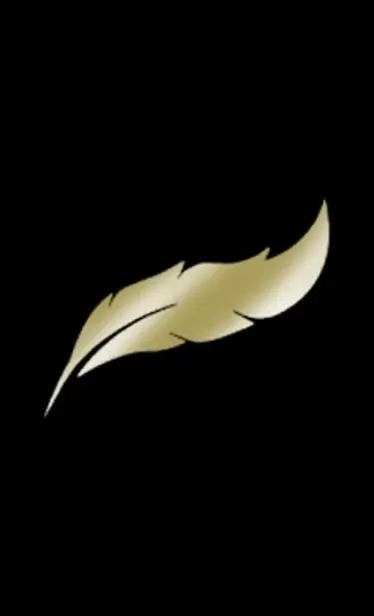Equation of the Dark
When the room went dark, she heard her name.
“Audrey.”
It was a whisper at first that sounded as if it was from somewhere far away, or in the air, or even in the equations themselves. She froze, her marker poised above the whiteboard. One moment, the light had been flickering; the next, it was gone completely, leaving the classroom completely dark.
The sound of the generator from the science block faded away, and the windows looked totally dark as if something outside was leaning in to listen.
Audrey stayed still. She had been alone for hours, finishing the marking of her Year Thirteen mock exams. Just this morning, she had found herself frowning at her notes, remembering Mairead’s last coherent thought: “The variables devour the variables.” The faint scrawl of algebraic symbols on the board, equations written in her looping handwriting were still there:
(3x² – 7x + 2) = 0
She had left it unfinished because she had intended to demonstrate the discriminant the next morning.
Then she heard it again.
“Audrey.”
Her name, and whoever was calling her had icy breath.
Her heart felt like it had missed a beat, and she reached for her phone. There was no signal. Of course not. The school sat on the edge of the Waitākere Ranges, far away enough from Auckland’s lights to make reception fickle.
She switched on the torch, and the beam sliced through the dark and lit the whiteboard. For a frightening moment she thought the marks were moving.
Not smudged. Moving.
The algebraic symbols were sliding across the whiteboard and rearranging themselves, like little insects crawling over the white surface. She blinked hard, once, then again and the figures stopped moving, but the equation now read:
(3x² – 7x + 2) = Audrey
Her name, was written neatly where she had meant to write the answer in the morning.
She heard herself moan out loud. It wasn’t quite a scream, not yet, anyway.
“This is ridiculous,” she whispered to herself, because hearing her own voice gave her some comfort. “It’s a reflection, or I’m overtired.”
She was tired. She had been working late ever since the new principal demanded evidence of “cross-curricular enrichment”. Her students already thought she was eccentric, the quiet teacher who spoke to the equations as though they were alive. Now she wondered if they had been right.
Still, the atmosphere felt wrong. The darkness was too dense, the school clock on the far wall had stopped at 9.23., and the corridor lights beyond the classroom door were off. She could just hear the faint ticking of the emergency light above the exit.
Then the marker moved again and it began to write slowly, dragging itself across the whiteboard in tiny, scraping motions.
Audrey dropped her phone, and it skittered across the floor. Her hands were shaking, but she forced herself to step forward.
“Who’s there?” She called, and was shocked to hear how scared she sounded.
The marker squeaked across the whiteboard as if it was answering her.
Solve for what you cannot see.
The words were written slowly, one by one, each letter deliberately formed, and underneath them, symbols appeared, arrows, brackets, fractions, in an impossible tangle of polynomial notation.
She stared at them. Somewhere in her brain, beneath the fear, the mathematician stirred. This was algebra, yes, but it was wrong. The expressions folded back upon themselves. Brackets nested infinitely. Variables devoured other variables. The equation was recursive, consuming itself, and building towards something vast.
She reached out with one trembling hand and rubbed out a single mark. The board hissed, and just for a second, she thought she could hear breathing behind the white surface; breathing that was slow and noisy.
Her knees buckled and she sat down at the nearest desk.
This classroom had once been part of the old convent before the school expanded. The senior teachers spoke of it with a kind of fond dread. They said that before the electricity, the nuns had taught by candlelight, and one of them, Sister Miriam, had died during an algebra lesson. A heart attack, it was said.
Audrey remembered that story now, and it seemed absurdly, but highly, relevant.
“Stop it,” she said, her voice trembling. “This isn’t funny.”
But the marker began to write again.
“You inherit the variables. You inherit the work unfinished. You inherit the madness.”
“No,” she whispered. “No, I don’t.”
For some strange reason she thought of the house she had inherited from her aunt, who had been a mathematics lecturer at the University of Auckland before she had a nervous breakdown. Mairead had spent her last years muttering about “completing the square” and “holding the pattern at bay”. When Audrey sorted through her things last month, she had found papers filled with symbols that looked almost identical to those now in front of her.
The temperature in the room dropped to freezing, and the marker snapped in half, as if by an unseen hand.
And then, on the whiteboard, a new message appeared:
Continue, or the solution completes itself.
Audrey felt suddenly unsteady on her feet, and she reached for the edge of a desk to steady herself. “I don’t understand what you want.”
But actually she did understand, in part. Algebra was the manipulation of balance, of symmetry. If you changed one side of an equation, the other side changed to match. That was its beauty, its order. But what if the universe itself obeyed that same principle, and something had gone wrong in its symmetry? What if someone, her aunt, had found the flaw and tried to correct it, and in doing so had opened the gap wider?
She took another marker, and her hand began to move of own volition, tracing symbols she half-recognised. The marks glowed faintly as she wrote.
Then the voice behind her said softly.
“Good. Balance must be restored.”
She turned, she couldn’t see anyone one, but she felt as though someone was there.
“Who are you?” she whispered.
“I am the remainder,” the voice said. “The formula that was never solved.”
The marker in her hand dissolved.
Something moved on the board, and it looked as if it was trying to be her reflection, but it was wrong. It tilted its head the opposite to way she did, and it smiled and she definitely wasn’t smiling.
“Audrey” it said, “finish the proof.”
Her mouth felt dry. “What happens if I do?” She asked croakily.
“Balance returns. Or you disappear. Both outcomes are correct.”
The lights flicked on and then off, and then emitted a low, unnatural glow. The writing on the whiteboard expanded, the symbols overlapping symbols until they had drawn something that looked like a door made of algebra.
Her ears were buzzing, like they did on a plane.
“I can’t,” she whispered. “I don’t know how.”
Her reflection chuckled. “You already do. You’ve always known. You were born from that equation.”
Audrey stumbled back. Another marker began forming geometric shapes, triangles, circles, and then perfect, parabolic curve s.
The voice whispered again, and it seemed to come from everywhere at once.
“Balance us.”
Her head was throbbing now, and the formulas in her mind were spinning so fast she could hardly think. She raised her hand to the whiteboard again, compelled by something beyond her control, and began to write. Symbols flowed through her, faster, impossible, endless.
Somewhere outside, dawn began to appear. The light would come, soon but not quite yet.
Inside the classroom, the final line of the proof formed, and the darkness seemed to inhale.
Audrey stopped writing. The marker was still in her hand. She understood, too late, that the true weight of her inheritance was not money or memory, but a duty to hold back the dark algebraic pattern that connected everything and wanted only to balance itself by swallowing its opposite.
Whether she could complete the equation before daybreak was a question that would only be answered when the sun rose.




This story has not been rated yet. Login to review this story.